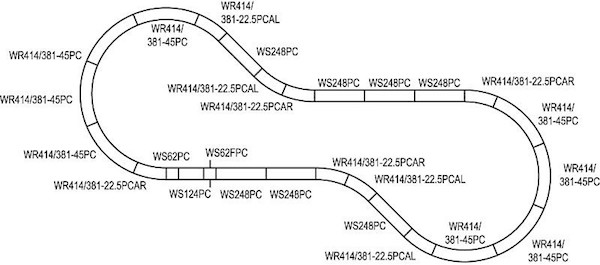Chevron_GATX
Member
I have some fairly long locos, including the Bachmann EMD DDA40X "Big Boy." I was planning on adding multi-loco trains using three to six SD-40s, SD-90s (or a combination of both) in tandem. My current freight inventory includes only a five-car stack-container car that I just ordered. I was planning on building a very long consist of 31K crude-oil tank cars as well. I'm reviewing my space options and haven't yet chosen any sort of layout yet. So, my primary freight consists:
• 4-6 five-car stack-container well-cars.
• 10-20 fifty-foot Railbox box cars.
• 20 or more 31K crude-oil tank cars.
I guess my question is: What is the minimum radius (for 180° turns) that doesn't look "wrong?"
• 4-6 five-car stack-container well-cars.
• 10-20 fifty-foot Railbox box cars.
• 20 or more 31K crude-oil tank cars.
I guess my question is: What is the minimum radius (for 180° turns) that doesn't look "wrong?"


